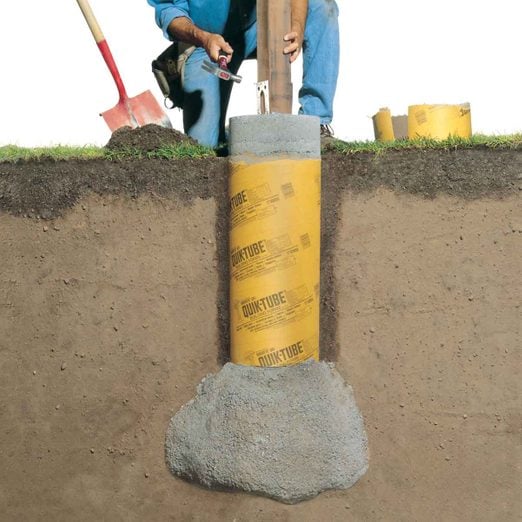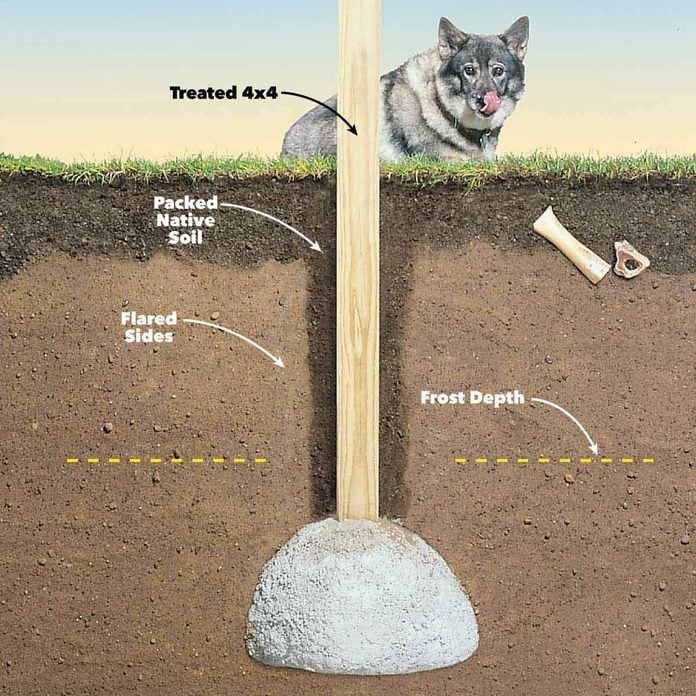Professional Tips for Putting Up Deck Footings to Assistance Your Outdoor Space
When it comes to developing a deck, one of the most essential components to consider is the setup of appropriate footings. These footings are the structure upon which your outdoor space will certainly relax, providing stability and support for years to come. What specifically does it take to mount deck grounds appropriately?
Importance of Correct Deck Grounds
Appropriate deck footings are essential for guaranteeing the stability and longevity of your outside room. When building a deck, it is important to take notice of the foundation on which it will certainly rest. Deck footings offer the required assistance for the whole framework and assistance disperse the weight uniformly - Deck Footings. Without strong and correctly installed grounds, your deck may end up being unstable, bring about security risks and expensive repair services.

In addition to security, appropriate deck footings also add to the longevity of your outside space (Deck Footings). Footings that are designed and created to hold up against the aspects and dirt problems in your location will aid protect against the deck from shifting or working out in time. By ensuring the grounds are appropriately sized and set up, you can minimize the danger of damage to the deck structure, extending its life-span and minimizing the need for pricey repairs or replacements

Choosing the Right Kind Of Footings
When selecting the suitable sort of footings for your deck, it is essential to consider elements such as soil conditions, local building ordinance, and the total layout of your outside room. The kind of footing you pick will play an important function in making sure the stability and longevity of your deck.
One typical kind of ground is the concrete footing. Concrete grounds are appropriate for a lot of soil problems and provide outstanding support for decks.
In some cases, you might require to use specific grounds, such as stack footings or deep foundations, if you are constructing a big or multi-level deck. These footings are designed to distribute the weight of the deck over a bigger location, making certain security and stopping resolving or sinking.
Prior to picking a kind of footing, it is necessary to speak with regional building regulations and regulations to ensure conformity. Additionally, think about the style and planned use your outdoor area. Variables such as the dimension, shape, and load-bearing needs of your deck will certainly affect the sort of footing that is most suitable.
Preparing the Ground for Footing Installment
To appropriately prepare the ground for footing installment, it is essential to analyze the soil conditions and take needed actions to guarantee security and toughness of the deck. The very first action is to dig deep into the area where the grounds will be installed.
When the location has actually been excavated, the following action is to compact the dirt. This can be done utilizing a plate compactor or by making use of a hand meddle. Condensing the dirt helps to get rid of any kind of voids or air pockets, which can cause working out and instability with time.
After condensing the soil, it is essential to lay a layer of crushed rock or crushed stone at the end of the excavation. This will certainly offer drain and aid to avoid water from merging around the grounds, which can bring about erosion and instability.
Step-by-Step Guide to Putting Up Deck Footings
After properly preparing the ground for footing installation, the next step is to begin the procedure of mounting deck grounds. This step-by-step guide will certainly give you with a clear understanding of how to set up deck footings for your outside space.
Determine the location: Start by noting the settings of the deck footings using risks and string. Make certain that the areas line up with the layout and format of your deck.
Dig the holes: Use a message hole miner or an auger to dig the holes for the footings. The deepness and size navigate to these guys of the openings need to be in accordance with neighborhood building ordinance and the specific needs of your deck design.
Degree the openings: Utilize a degree to make sure that the holes are dug to the appropriate depth and are degree with each various other. (Deck Footings)
Include crushed rock: Location a layer of gravel at the bottom of each opening to boost drain and stop the timber from deteriorating.
Place the grounds: Position the grounds right into the holes, ensuring they are level and plumb. Use a degree and a gauging tape to make certain precision.
Secure the footings: Pour concrete into the openings around the footings, loading them to the top. Utilize a message level to guarantee the grounds stay level as the concrete sets.
Enable time for treating: Let the concrete cure according to the supplier's instructions prior to proceeding with the deck building.
Common Blunders to Prevent During Footing Installation
One vital element to consider throughout the installment of deck footings is staying clear of typical mistakes that can endanger the stability and long life of your outdoor space. While deck grounds may look like a easy and uncomplicated part of the construction process, neglecting certain aspects can lead to expensive repairs and potential safety and security risks down the line.

Additionally, ignoring to mount proper drain steps can trigger water to build up around the grounds, resulting in rot, degeneration, and the ultimate weakening of the deck's foundation. Utilizing the incorrect type of footing product or falling find out here now short to sufficiently protect the footings can jeopardize their architectural honesty.
To avoid these errors, it is important to seek advice from a specialist or follow industry guidelines to make certain appropriate ground installment. By doing so, you can ensure the stability and durability of your outdoor area, supplying a satisfying and safe atmosphere for several years ahead.
Conclusion
In conclusion, setting up proper deck grounds is critical for the security and long life of your outdoor area. By picking the right type of footings and adequately preparing the ground, you can guarantee a strong foundation for your deck. Following a step-by-step overview and staying clear of usual blunders throughout footing installment will certainly better boost the durability and security of your deck.
Appropriate deck footings are vital for making sure the security and durability of your outside room. The grounds serve as a connection in between the deck and the ground, enabling the weight of the deck and its occupants to be spread equally into the soil.One common kind of ground is the concrete footing. Insert the grounds: Place the grounds right into the holes, making sure they are degree and plumb. Safeguard the grounds: Put concrete into the openings around the grounds, filling them to the top.